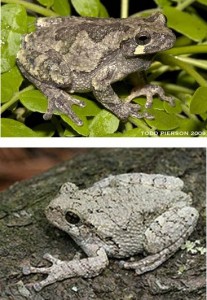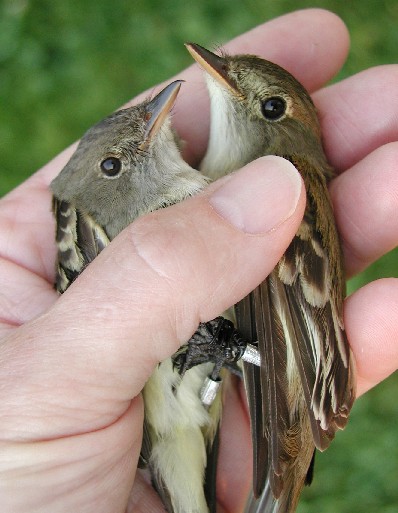It is common for natural history museums to house collections of plants, insects and other groups of animals. The Borror Laboratory of Bioacoustics (BLB hereafter) is a collection of animal sound recordings, one of only about 10 collections of animal sound recordings in the world. We preserve the behavior of an animal making sounds, rather than the animal itself. Why would a biodiversity museum contain a collection of animal sound recordings?
The BLB is named after Dr. Donald Borror (1907-1988), a professor of entomology and zoology at Ohio State who early on realized the biological significance of recording the sounds of insects and birds. About 15,000 of the 45,000 recordings in the BLB were made by Borror himself. Donald Borror was a systematic entomologist, a scientist who studies the evolutionary relationships of insects, and was trained in the museum methods involved in maintaining a “traditional” collection of physical specimens (see previous posts on this blog). Upon leaving the Navy after WWII, he was among the first biologists to use a tape recorder and a sound spectrograph (a machine for making “voice prints”). These tools enabled Borror and his students to record and describe the sounds of insects and birds.

Dr Donald Borror recording bird sounds with a sound parabola
To return to our original question: what is it about animal sounds that is important and merits their collection and archival storage? One of the primary tasks that museum scientists face is describing species. All of our estimates of earth’s biodiversity and much work in all of biology hinges upon being able to demarcate species differences. Traditionally, scientists relied on using anatomical characters that they could see to describe different species. In the 1960’s a common definition was adopted that defines a species as a group of individuals that can breed with one another. This definition recognized behavior as being important in drawing species boundaries. Why? Animals generally don’t mate at random; although there are exceptions, females typically are choosy and males advertise to attract females. Females prefer to mate with males of their own species (because hybrids are usually at a disadvantage), and frequently rely on sound signals to make their choice. This selective pairing leads, over time, to the accumulation of genetic differences between species.
Male birds, frogs and toads, some mammals and many insects use sound signals to attract females. In the 1950’s and 1960’s as sound recording in nature became practical, scientists documented many cases where what was thought to be one species was actually composed of two or more groups that produced different sounds and did not interbreed; that is, the groups met the definition of being different species. For example, after the first decade of sound recording and study, the number of recognized species of crickets in eastern North American more than doubled, as scientists, among them Borror and his students, described song differences. Many similar examples have accumulated in birds also, especially in the 5,000 or so species of song birds.
Of course, every bird watcher knows that a good way to recognize many species is by their song. But the scientific basis for this common knowledge derives from the recordings deposited in sound archives such as the BLB. In addition to being crucial in identifying species, animal sounds are also used to arrange species into higher categories (genera, families, etc.) and also play a role in the study of animal behavior. Many if not most songs of song birds vary geographically and over time. Collections like the BLB contain a rich array of recordings going back to 1948 allowing us to study how sounds vary between species and over time.
About the Author: Dr. Doug Nelson is Director of the Borror Laboratory of Bioacoustics.


